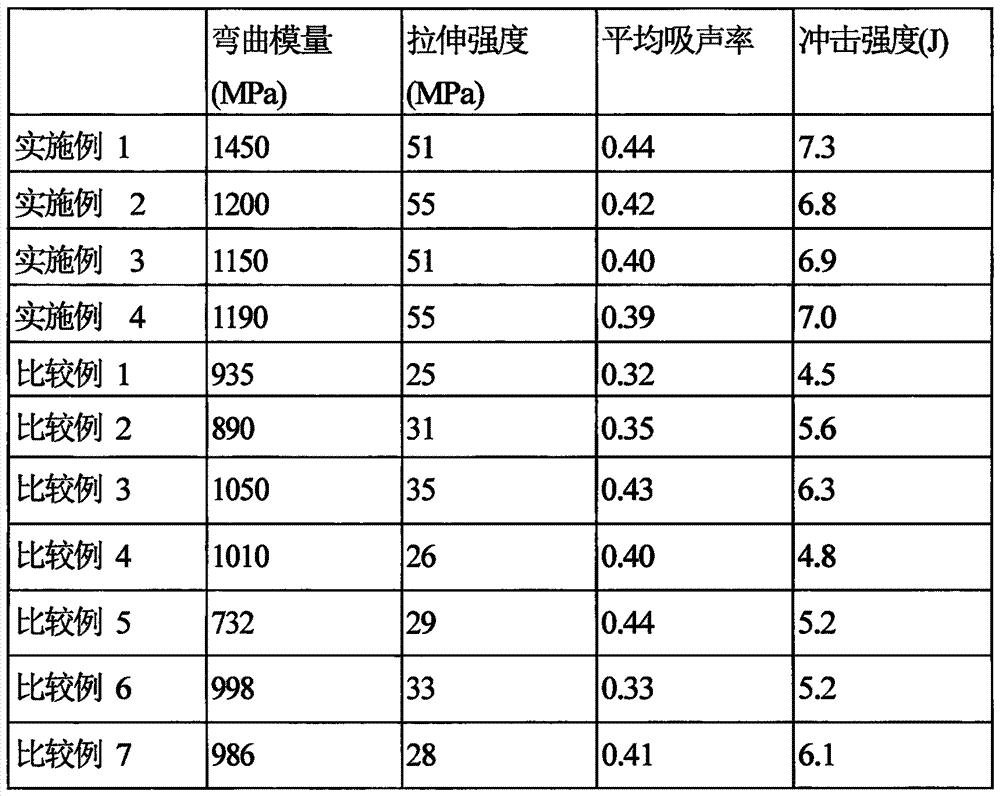Non-woven fabric board for exterior of vehicle and method for manufacturing same
A non-woven and object-board technology, which is applied to vehicle parts, textiles, papermaking, non-woven fabrics, etc., can solve the problems of strength degradation, component weight and material cost increase, and low bulkiness of cloth fabrics, etc., to improve thermoformability , Improve the bonding efficiency, improve the effect of mechanical properties
- Summary
- Abstract
- Description
- Claims
- Application Information
AI Technical Summary
Problems solved by technology
Method used
Image
Examples
Embodiment 1
[0077] PET fibers as non-circular cross-section matrix fibers and non-circular cross-section binder fibers including low-melting PET fibers were used in a weight ratio of 6:4, and non-circular cross-section binder fibers were produced using conventional production processes for thermally bonded non-woven fabrics. Fabric board. The nonwoven fabric sheet is formed to have a thickness of 2 mm and an areal density of 1,200 g / m 2 .
[0078] As the non-circular cross-section matrix fiber and non-circular cross-section binder fiber as described above, fibers having a W-shaped cross-section produced by melt spinning with a W-shaped spinneret were used, and a crimp number of 9.8 was used. ea / inch, a fiber with a non-circularity of 2.6 and a linear density of 7 denier.
Embodiment 2
[0080] PET fibers as non-circular cross-section matrix fibers and non-circular cross-section binder fibers including low-melting PET fibers were used in a weight ratio of 6:4, and non-circular cross-section binder fibers were produced using conventional production processes for thermally bonded non-woven fabrics. Fabric board. The nonwoven fabric sheet is formed to have a thickness of 2 mm and an areal density of 1,200 g / m 2 .
[0081] As the non-circular cross-section matrix fiber and non-circular cross-section binder fiber as described above, fibers having a W-shaped cross-section produced by melt spinning with a W-shaped spinneret were used, and a crimp number of 9.8 was used. ea / inch, fibers with a non-circularity of 2.6, and fibers with a linear density of 14 denier were used as non-circular cross-section matrix fibers, and fibers with a linear density of 7 denier were used as non-circular cross-section binder fibers.
Embodiment 3
[0083] PET fibers as non-circular cross-section matrix fibers and non-circular cross-section binder fibers including low-melting PET fibers were used in a weight ratio of 6:4, and non-circular cross-section binder fibers were produced using conventional production processes for thermally bonded non-woven fabrics. Fabric board. The nonwoven fabric sheet is formed to have a thickness of 2 mm and an areal density of 1,200 g / m 2 .
[0084] As the non-circular cross-section matrix fiber and non-circular cross-section binder fiber as described above, fibers having a W-shaped cross-section produced by melt spinning with a W-shaped spinneret were used, and a crimp number of 9.8 was used. ea / inch, fibers with a non-circularity of 2.0, and as non-circular cross-section matrix fibers, fibers with a linear density of 14 denier were used as non-circular cross-section matrix fibers, and fibers with a linear density of 7 denier were used as Non-circular cross-section bonded fibers.
PUM
| Property | Measurement | Unit |
|---|---|---|
| perimeter | aaaaa | aaaaa |
| melting point | aaaaa | aaaaa |
| area | aaaaa | aaaaa |
Abstract
Description
Claims
Application Information
 Login to View More
Login to View More - R&D
- Intellectual Property
- Life Sciences
- Materials
- Tech Scout
- Unparalleled Data Quality
- Higher Quality Content
- 60% Fewer Hallucinations
Browse by: Latest US Patents, China's latest patents, Technical Efficacy Thesaurus, Application Domain, Technology Topic, Popular Technical Reports.
© 2025 PatSnap. All rights reserved.Legal|Privacy policy|Modern Slavery Act Transparency Statement|Sitemap|About US| Contact US: help@patsnap.com


